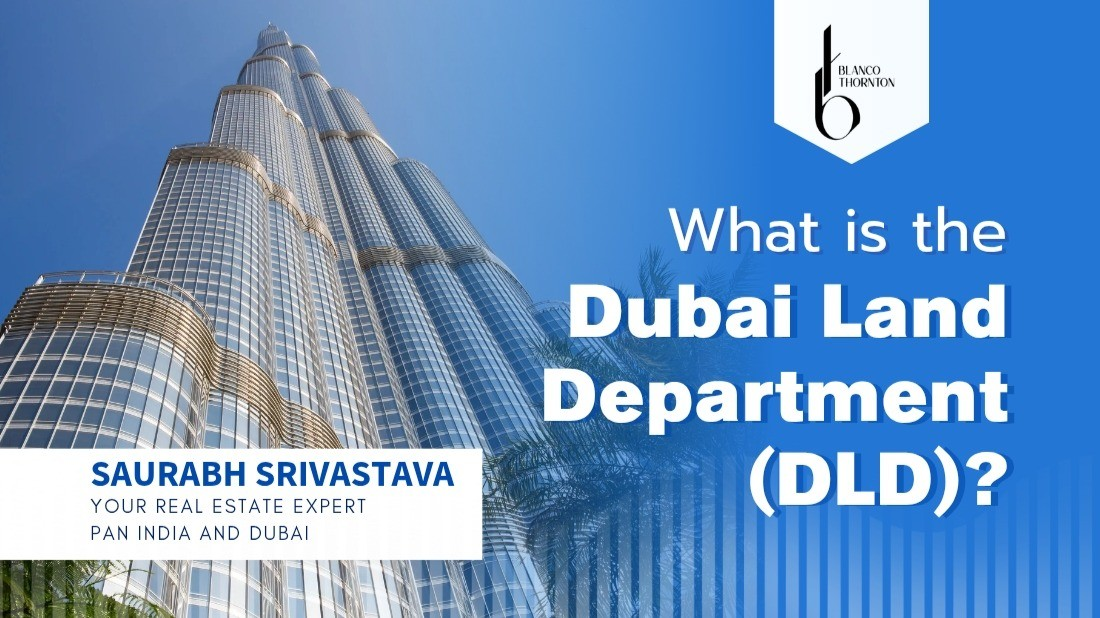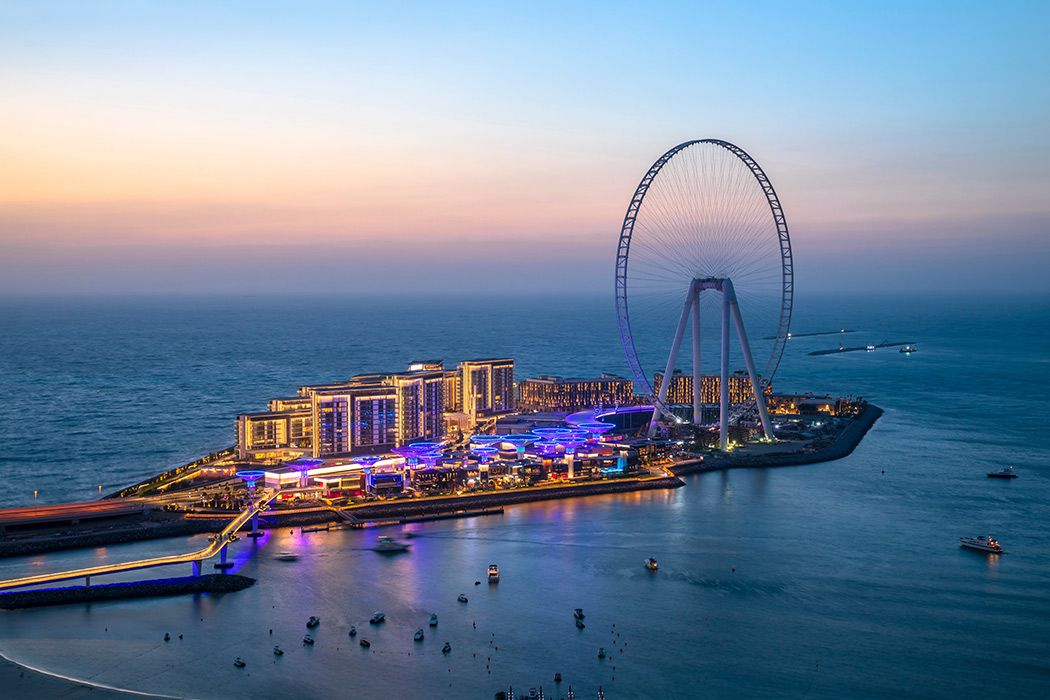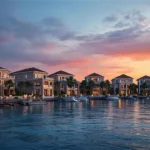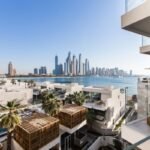Now Reading: Real Estate Tax Trends in Dubai’s New Island Mega Projects
-
01
Real Estate Tax Trends in Dubai’s New Island Mega Projects
Real Estate Tax Trends in Dubai’s New Island Mega Projects
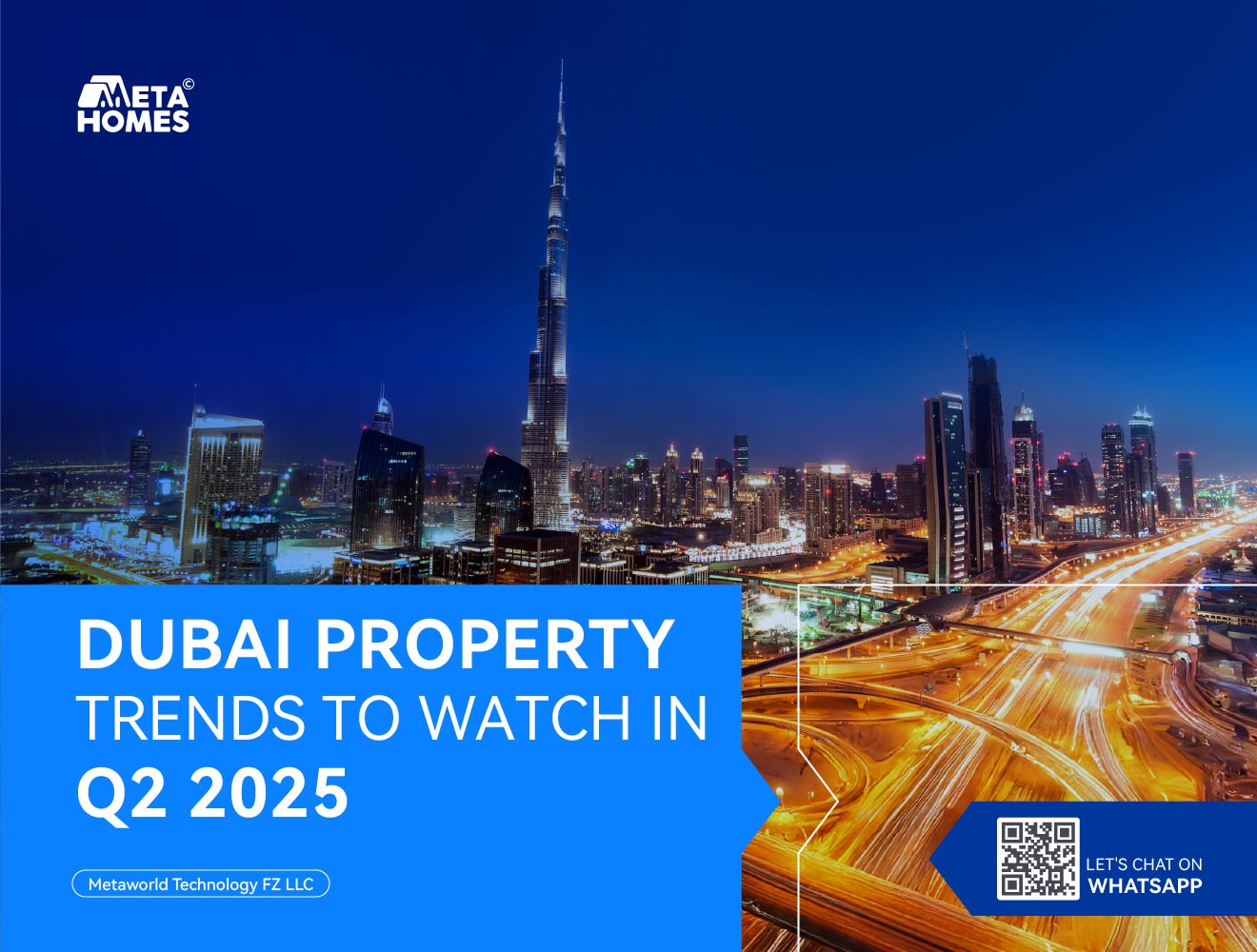
Table of Contents
Imagine waking up in your sleek villa on Palm Jebel Ali, the morning sun glinting off the Arabian Gulf, knowing you’ve tapped into one of the world’s most tax-friendly real estate markets. In 2025, Dubai’s new island mega projects Palm Jumeirah, Palm Jebel Ali, and Dubai Islands are redefining luxury investment, offering 100% freehold ownership, a dirham pegged to the U.S. dollar for stability, and no personal income tax, capital gains tax, or annual property taxes for individuals.
With 58% of buyers from countries like the UK, India, and Russia, Dubai recorded 94,000 property transactions in the first half of 2025. These islands deliver 4-6% rental yields and 8-15% price appreciation, outshining London (2-4%) or New York (3-4%). Properties over $545,000 qualify for a 10-year Golden Visa, while smaller units offer 2-year residency perks.
Residential purchases dodge 5% VAT, but transfer fees, developer fees, and emerging tax trends like corporate tax and new 2025 regulations require savvy planning. This guide explores tax trends for projects like Palm Jumeirah Ocean Villas, Palm Jebel Ali Coastal Villas, Dubai Islands Horizon Villas, and Haven Living, helping you maximize returns in these vibrant developments.
Dubai’s Island Mega Projects: A Tax-Light Haven
Nestled 15-30 minutes from Dubai International Airport via Sheikh Zayed Road or water taxi, Palm Jumeirah, Palm Jebel Ali, and Dubai Islands span 50-80 kilometers of coastline, offering luxury villas, eco-friendly designs, and low 2-3% vacancy rates compared to 7-10% globally, driven by 25 million tourists and a 5% population surge.
Investors keep 100% of rental income ($48,000-$240,000 annually on a $1.2 million-$6 million property), versus $26,400-$144,000 elsewhere after taxes. Zero capital gains tax saves $60,000-$280,000 on a $300,000-$1 million profit, and no annual property taxes save $12,000-$120,000 yearly, unlike New York (1-2%) or London (council tax up to 2%). Residential purchases avoid 5% VAT ($60,000-$300,000), but new tax rules and fees demand attention to keep costs low.
The tax-friendly vibe feels like a warm embrace for your wealth.
No Annual Property Taxes: A Core Advantage
Unlike global markets where annual property taxes cost $12,000-$120,000 on a $1.2 million-$6 million property, these islands impose none, freeing up funds for reinvestment or maintenance. Maintenance fees vary: $15,000-$25,000 for Palm Jumeirah’s luxury villas, $12,000-$20,000 for Palm Jebel Ali’s eco-conscious designs, and $5,000-$14,000 for Dubai Islands’ modern projects. A 5% municipality fee on rentals ($2,400-$12,000) applies, with Palm Jumeirah’s higher fees reflecting premium amenities like private beaches. These costs are significantly lower than New York’s 1-2% property tax or London’s council tax, making these islands a cost-efficient choice for investors.
No property taxes feel like a weight lifted from your investment dreams.
Zero Capital Gains Tax: Maximize Sale Profits
Dubai’s zero capital gains tax lets investors keep 100% of sale profits, a hallmark of its appeal. Selling a $2 million Haven Living apartment on Dubai Islands for $2.5 million after 25% appreciation yields a $500,000 tax-free profit, saving $100,000-$140,000 compared to London (20-28%) or New York (20-37%). A $4 million Palm Jumeirah villa sold for $5 million yields a $1 million tax-free gain, saving $200,000-$280,000. Price growth varies: Palm Jumeirah at 8-12%, Palm Jebel Ali at 10-15% due to limited supply, and Dubai Islands at 8-12%. While transfer fees apply on resale, this tax-free benefit enhances profitability across all projects.
Keeping every dirham feels like a financial victory you’ve earned.
No Personal Income Tax: Boost Rental Income
Investors pay no personal income tax on rental income, unlike the U.S. (up to 37%) or UK (up to 45%). A $2 million Haven Living apartment yielding $80,000-$120,000 annually keeps every dirham, versus $44,000-$72,000 elsewhere, saving $36,000-$48,000. A $4 million Palm Jumeirah villa yielding $160,000-$240,000 saves $72,000-$96,000. Short-term rentals, boosted by 25 million tourists, require DTCM registration ($408-$816), while long-term leases need Ejari registration ($54-$136). Short-term rentals in Palm Jumeirah boost yields by 15-20% ($12,000-$48,000), while Palm Jebel Ali and Dubai Islands offer 10-15% ($8,000-$36,000). This tax-free income is a cornerstone of these islands’ appeal, though VAT compliance is key.
Tax-free rentals feel like a monthly gift to your portfolio.
VAT Trends: Purchases and Rentals
Residential purchases are VAT-exempt, saving $60,000-$300,000 on a $1.2 million-$6 million property, unlike commercial properties or the UK’s stamp duty (up to 12%). Off-plan purchases, common in Palm Jebel Ali and Dubai Islands, incur 5% VAT on developer fees ($20,000-$80,000), recoverable via Federal Tax Authority (FTA) registration ($500-$1,000).
Short-term rental operators must register for VAT if revenue exceeds $102,041, charging 5% but claiming credits on expenses like DTCM fees ($408-$816). A $2 million Haven Living apartment yielding $80,000-$120,000 incurs $4,000-$6,000 in VAT but allows $1,000-$3,000 in credits. A $4 million Palm Jumeirah villa yielding $160,000-$240,000 incurs $8,000-$12,000 but allows $2,000-$5,000 in credits. Non-compliance risks fines up to $13,612, so diligent records are essential.
The VAT exemption feels like a friendly nod to your investment.
Corporate Tax: A Growing Consideration
Introduced in 2023, the 9% corporate tax applies to businesses unless exempt, impacting investors holding properties through companies. A company leasing a $4 million Palm Jebel Ali villa yielding $160,000-$240,000 faces a 9% tax ($14,400-$21,600), reducing net income to $145,600-$218,400. A $2 million Horizon Villas property yielding $80,000-$120,000 incurs $7,200-$10,800 in tax.
Qualified Free Zone Person (QFZP) status in areas like Dubai Multi Commodities Centre (DMCC) avoids this, saving $12,240-$61,200, with setup costs of $2,000-$5,000. Small business relief waives corporate tax for revenues under $816,000 until December 31, 2026. Individual ownership avoids this tax, making it ideal for most investors.
Corporate tax feels like a navigable bump for smart planners.
New Tax Rule 1: Domestic Minimum Top-up Tax (DMTT)
Effective January 1, 2025, the DMTT imposes a 15% tax on multinational enterprises (MNEs) with global revenues over €750 million ($793 million). A corporate entity leasing 10 properties with $1 million in income faces a 15% tax ($150,000), reducing net income to $850,000. Individual investors and smaller entities with revenues below $816,000 are unaffected, and QFZP status avoids DMTT, saving $12,240-$61,200 on $122,400-$612,000 in income. This rule targets large corporations, preserving the tax-light appeal for most buyers in these mega projects.
The DMTT feels like a corporate tweak, sparing individual wealth.
New Tax Rule 2: Qualifying Investment Fund (QIF) Updates
Cabinet Decision No. 34 of 2025, effective Q2 2025, refines QIF and Real Estate Investment Trust (REIT) rules. QIFs remain exempt from corporate tax if real estate income is below 10% of total income and ownership is diversified. If a QIF earns $1 million, with $200,000 from real estate, 80% ($160,000) faces 9% tax ($14,400). Restructuring costs $1,500-$4,000. Individual investors avoid these rules, enjoying tax-free gains, while corporate investors must structure portfolios carefully to minimize tax exposure.
QIF updates feel like a strategic puzzle for business investors.
Transfer Fees: Budgeting for Upfront Costs
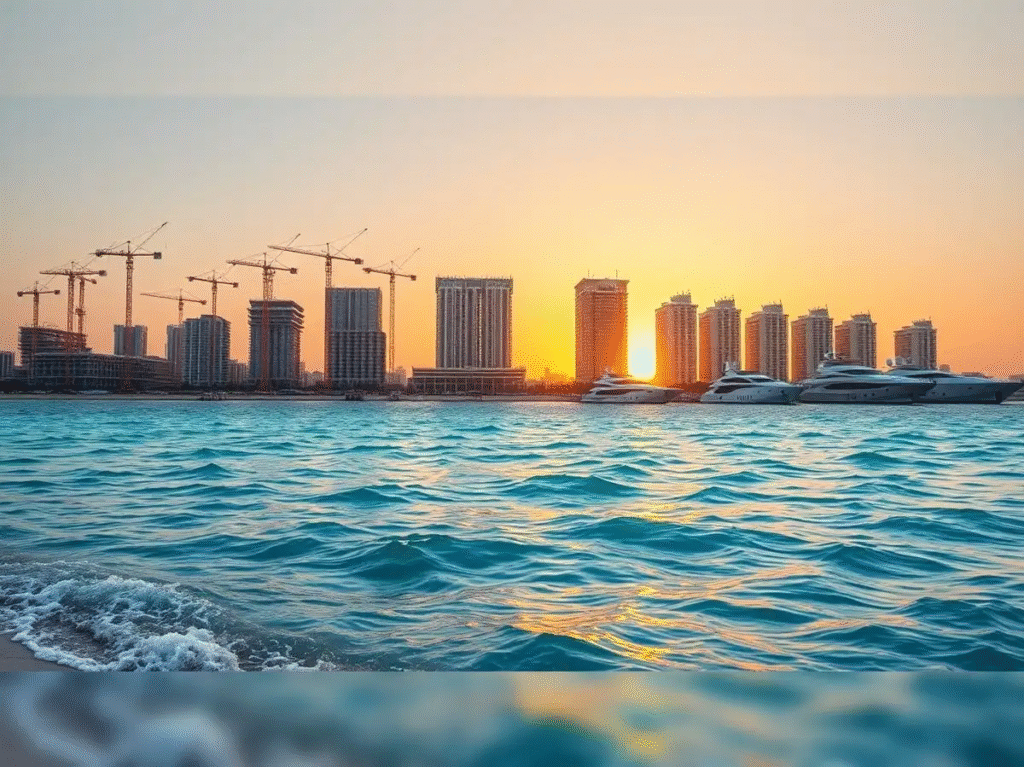
The 4% Dubai Land Department (DLD) fee, typically split between buyer and seller, is a key cost: $48,000 for a $1.2 million Haven Living apartment or $160,000 for a $4 million Palm Jumeirah villa. Gift transfers to family or shareholders reduce DLD to 0.125%, saving $46,500-$155,000. Broker fees, typically 2% ($24,000-$80,000), may be waived for off-plan projects in Dubai Islands. Title deed issuance ($136-$272) and developer fees for off-plan properties (up to $2,722) add up. Mortgage registration (0.25% of the loan, or $3,000 for a $1.2 million loan) and valuation fees ($680-$1,360) apply for financed deals. Dubai Islands’ 35/65 payment plans are more flexible than Palm Jumeirah’s 60/40 plans, easing cash flow.
Transfer fees feel like a small step toward your island dream.
Palm Jumeirah: Ocean Villas
Ocean Villas by Nakheel, set for completion in Q2 2025, offer 4-6 bedroom villas ($3 million-$6 million) with 4-6% rental yields and 8-12% price growth. A $4 million villa yields $160,000-$240,000 tax-free, saving $72,000-$96,000. Selling for $5 million yields a $1 million tax-free profit, saving $200,000-$280,000. No property taxes save $40,000-$80,000 yearly, and VAT exemption saves $200,000. Transfer costs include a 4% DLD fee ($160,000), 2% broker fee ($80,000), and title deed issuance ($136-$272). Gift transfers save $155,000. Maintenance fees are $15,000-$25,000, with a 5% municipality fee ($8,000-$12,000). QFZP saves $40,800-$61,200 for corporate owners. U.S. investors deduct depreciation ($72,727-$109,091), saving up to $36,364. Golden Visa eligibility applies.
The beachfront elegance feels like a tax-free masterpiece.
Palm Jebel Ali: Coastal Villas
Coastal Villas by Nakheel, set for completion in Q3 2025, offer 4-6 bedroom villas ($2.72 million-$5.44 million) with 4-6% rental yields and 10-15% price growth. A $3 million villa yields $120,000-$180,000 tax-free, saving $54,000-$72,000. Selling for $3.75 million yields a $750,000 tax-free profit, saving $150,000-$210,000. No property taxes save $30,000-$60,000 yearly, and VAT exemption saves $150,000. Transfer costs include a 4% DLD fee ($108,900-$217,800), 2% broker fee ($54,450-$108,900), and title deed issuance ($136-$272). Gift transfers save $106,650-$213,300. Maintenance fees are $12,000-$20,000, with a 5% municipality fee ($6,000-$9,000). QFZP saves $30,600-$45,900. U.S. investors deduct depreciation ($54,545-$98,182), saving up to $34,091. Golden Visa eligibility applies.
The eco-friendly charm feels like a tax-efficient retreat.
Dubai Islands: Horizon Villas
Horizon Villas by a leading developer, set for completion in Q2 2026, offer 4-6 bedroom villas ($2.72 million-$5.44 million) with 4-6% rental yields and 8-12% price growth. A $3 million villa yields $120,000-$180,000 tax-free, saving $54,000-$72,000. Selling for $3.75 million yields a $750,000 tax-free profit, saving $150,000-$210,000. No property taxes save $30,000-$60,000 yearly, and VAT exemption saves $150,000. Transfer costs include a 4% DLD fee ($108,900-$217,800), 2% broker fee ($54,450-$108,900), and title deed issuance ($136-$272). Gift transfers save $106,650-$213,300. Maintenance fees are $12,000-$20,000, with a 5% municipality fee ($6,000-$9,000). QFZP saves $30,600-$45,900. U.S. investors deduct depreciation ($54,545-$98,182), saving up to $34,091. Golden Visa eligibility applies.
The waterfront serenity feels like a modern tax-light gem.
Dubai Islands: Haven Living
Haven Living by Metac Properties, set for completion in Q4 2025, offers 1-3 bedroom apartments ($475,750-$1.2 million) with 4-6% rental yields and 8-12% price growth. A $1.2 million apartment yields $48,000-$72,000 tax-free, saving $21,600-$28,800. Selling for $1.5 million yields a $300,000 tax-free profit, saving $60,000-$84,000. No property taxes save $12,000-$24,000 yearly, and VAT exemption saves $60,000. Transfer costs include a 4% DLD fee ($48,000), 2% broker fee ($24,000), and title deed issuance ($136-$272). Gift transfers save $46,500. Maintenance fees are $5,000-$10,000, with a 5% municipality fee ($2,400-$3,600). QFZP saves $12,240-$18,360. U.S. investors deduct depreciation ($21,818-$43,636), saving up to $17,455. Golden Visa eligibility applies for properties over $545,000.
The waterfront charm feels like a budget-friendly tax haven.
Tax Planning Strategies to Stay Ahead
For individuals: First, hold properties personally to avoid corporate taxes. Second, negotiate DLD fee splits, saving $24,000-$80,000 on a $1.2 million-$4 million property. Third, use gift transfers to reduce DLD to 0.125%, saving $46,500-$155,000. Fourth, recover 5% VAT on developer fees via FTA registration ($500-$1,000). Fifth, leverage double taxation treaties with 130+ countries to avoid foreign taxes, saving $21,600-$96,000. Sixth, U.S. investors deduct depreciation ($21,818-$109,091) and management fees ($2,400-$14,545), saving up to $36,364. For corporates: First, obtain QFZP status to avoid 9% tax and DMTT. Second, keep QIF income below 10%. Third, use small business relief until 2026. Hire a property manager ($5,000-$25,000 annually) and tax professionals ($1,000-$3,000) to avoid fines up to $136,125.
These strategies feel like a roadmap to tax-smart wealth.
Ongoing Costs Beyond Taxes
Maintenance fees ($5,000-$25,000) and a 5% municipality fee on rentals ($2,400-$12,000) are the main ongoing costs. No annual property taxes save $12,000-$120,000 yearly. Short-term rentals boost yields by 10-20%, adding $8,000-$48,000, but require DTCM registration ($408-$816). Mortgage interest deductions for U.S. investors save up to $36,364. These costs, lower than London’s council tax ($24,000-$120,000), are often underestimated.
Ongoing costs feel like a gentle breeze compared to global markets.
Navigating Risks in 2025
A projected oversupply of 41,000 units may slow price growth, with Palm Jumeirah less affected due to its prestige. Mitigate by choosing trusted developers like Nakheel or Metac Properties, verifying escrow compliance under the 2025 Oqood system, and targeting low-vacancy projects (2-3%). Ensure QFZP and VAT compliance to avoid fines. Short-term rentals in Palm Jumeirah leverage tourists, while Palm Jebel Ali and Dubai Islands suit long-term leases.
Why Dubai’s Islands Are a Tax-Smart Choice
Palm Jumeirah Ocean Villas, Palm Jebel Ali Coastal Villas, Horizon Villas, and Haven Living offer no personal income tax, capital gains tax, or property taxes, saving $12,000-$280,000 annually. With 4-6% yields, 8-15% price growth, and Golden Visa perks, these 2025 mega projects make Dubai’s islands a vibrant, tax-efficient haven for investors who stay ahead of tax trends.
read more: Unlock Savings: Master Dubai’s DLD Fees and Taxes



